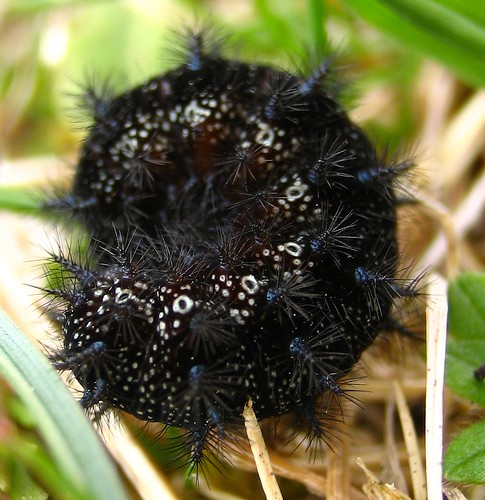The Marsh Fritillary (Euphydryas aurinia) is a butterfly of the Nymphalidae family.
The Marsh Fritillary is in decline in Europe and one of 11 butterflies covered by the United Kingdom Biodiversity Action Plan. The UK distribution can be seen on the National Biodiversity Network.
The adult butterflies are marked in checkered marking of gold and brown with a black background. The underside of the wings is patterned with yellow orange and black without any silver coloration at all. The eggs are yellow identified by being in a large batch,and the larvae are black.
The Marsh Fritillary is in decline in Europe and one of 11 butterflies covered by the United Kingdom Biodiversity Action Plan. The UK distribution can be seen on the National Biodiversity Network.
The adult butterflies are marked in checkered marking of gold and brown with a black background. The underside of the wings is patterned with yellow orange and black without any silver coloration at all. The eggs are yellow identified by being in a large batch,and the larvae are black.
The Marsh Fritillary is usually to be found in damp heathy grasslands which are called Rhos Pastures from the Welsh word Rhos meaning Heath. but the species does exist in other types of habitats which are drier, like neutral grasslands or dry calcareous grasslands. Small populations may be seen where there is not a lot of the larval foodplant present. Small populations can be an important element of the ecology because they can produce lots of mobile individuals which can found other populations.
The Marsh Fritillary is protected under British Law. It is listed under Schedule 5 of the Wildlife and Countryside Act, also the EC Habitats and Species Directive (Annex II).
The butterflies fly from the April until July depending on latitude and altitude.
The Marsh Fritillary is protected under British Law. It is listed under Schedule 5 of the Wildlife and Countryside Act, also the EC Habitats and Species Directive (Annex II).
The butterflies fly from the April until July depending on latitude and altitude.





No comments:
Post a Comment